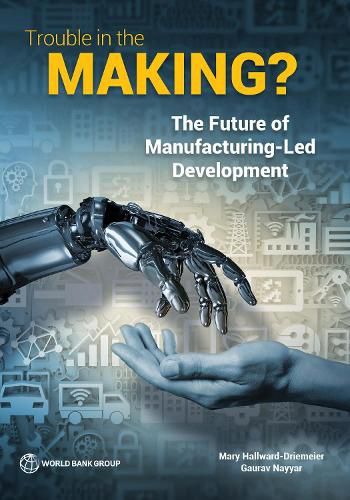Readings Newsletter
Become a Readings Member to make your shopping experience even easier.
Sign in or sign up for free!
You’re not far away from qualifying for FREE standard shipping within Australia
You’ve qualified for FREE standard shipping within Australia
The cart is loading…






Globalization and new technologies are impacting the desirability and feasibility of what has historically been the most successful development strategy. Manufacturing has been seen as special, promising both productivity gains and job creation. But trade is slowing. Global value chains (GVC) are maturing. Robotics, artificial intelligence, 3D printing, and the Internet of things are shifting what makes locations attractive for production and threatening significant disruptions in employment. There is a risk of increased polarization, within countries and across countries. Shifting the attention from high-income countries, this report takes the perspective of developing countries to ask: – If new technologies reduce the importance of low-wage labor, how can developing countries compete? – Do countries need to industrialize to develop? – How can countries at different levels of development take advantage of new opportunities? Development strategies need to broaden. Different manufacturing sub-sectors can still provide productivity growth or jobs; fewer can deliver both. Many of the pro-development characteristics traditionally associated with manufacturing–tradability, scale, innovation, learning-by-doing–are increasingly features of services. With faster diffusion of technology, it will be all the more important for countries to improve the enabling environment, remain open to trade, and support capabilities of firms and workers to ensure future prosperity is shared.
$9.00 standard shipping within Australia
FREE standard shipping within Australia for orders over $100.00
Express & International shipping calculated at checkout
Globalization and new technologies are impacting the desirability and feasibility of what has historically been the most successful development strategy. Manufacturing has been seen as special, promising both productivity gains and job creation. But trade is slowing. Global value chains (GVC) are maturing. Robotics, artificial intelligence, 3D printing, and the Internet of things are shifting what makes locations attractive for production and threatening significant disruptions in employment. There is a risk of increased polarization, within countries and across countries. Shifting the attention from high-income countries, this report takes the perspective of developing countries to ask: – If new technologies reduce the importance of low-wage labor, how can developing countries compete? – Do countries need to industrialize to develop? – How can countries at different levels of development take advantage of new opportunities? Development strategies need to broaden. Different manufacturing sub-sectors can still provide productivity growth or jobs; fewer can deliver both. Many of the pro-development characteristics traditionally associated with manufacturing–tradability, scale, innovation, learning-by-doing–are increasingly features of services. With faster diffusion of technology, it will be all the more important for countries to improve the enabling environment, remain open to trade, and support capabilities of firms and workers to ensure future prosperity is shared.